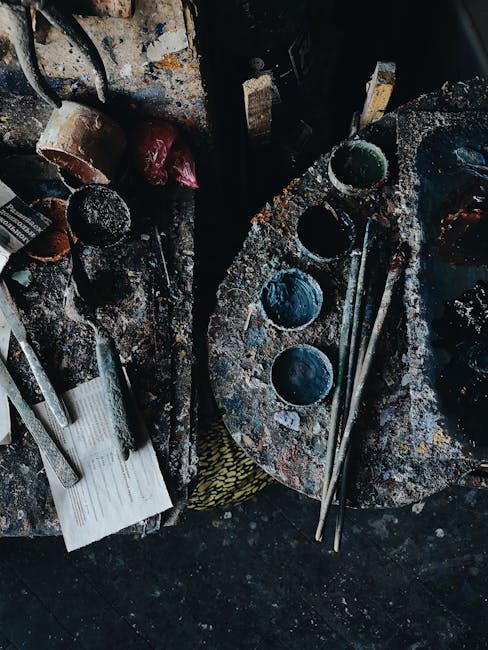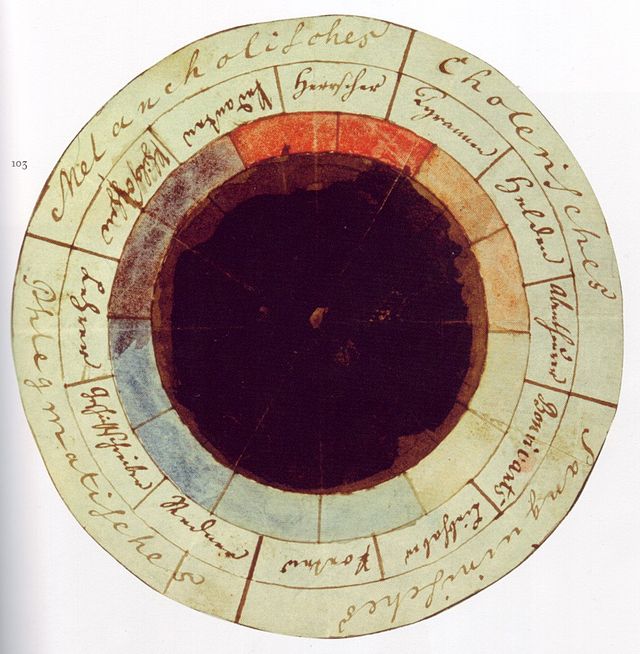
Coloring inside the lines has never been so important – especially when it comes to logo design! While choosing the perfect color palette might seem like a simple task, the psychology behind it is a whole different ballgame. From influencing consumer behavior to evoking emotions, mastering the palette is the key to creating a logo that truly speaks to your audience. So grab your paintbrushes (metaphorically, of course) and let’s dive into the wild world of color psychology in logo design!
Understanding the Basics of Color Theory
Have you ever looked at a piece of art and thought, “Wow, those colors really pop!” Or maybe you’ve walked into a room and immediately felt a sense of calm or excitement based on the color scheme. Well, my friend, that’s all thanks to the wonderful world of color theory.
Color theory is like the secret language of artists and designers everywhere. It’s all about understanding how colors work together to create different moods and emotions. And let me tell you, it’s not as simple as just picking your favorite color and calling it a day. There’s actually a science behind it all – who knew?
So, let’s break it down, shall we? Here are some key concepts to wrap your head around:
- Primary Colors: These are the OG colors – red, yellow, and blue. They can’t be created by mixing other colors together, which makes them pretty special.
- Secondary Colors: When you mix two primary colors together, you get secondary colors. Think orange, green, and purple. It’s like magic, but with paint.
- Color Harmonies: This is where the real fun begins. Color harmonies are combinations of colors that work well together, like complementary colors (those opposite each other on the color wheel) or analogous colors (those next to each other). It’s all about creating a visual feast for the eyes.

The Impact of Color on Consumer Perception
Ever wonder why a specific shade of lipstick or a certain color of packaging catches your eye while browsing through a store? It’s all about . Let’s dive into how different colors can influence our purchasing decisions without us even realizing it.
First off, let’s talk about the power of blue. This calming hue is often associated with trust and reliability, making it a popular choice for tech companies and financial institutions. So next time you find yourself drawn to a slick blue smartphone or a sleek blue credit card, know that it’s all part of a carefully crafted marketing strategy to make you feel secure and confident in your purchase.
On the flip side, red is a color that demands attention. It’s no wonder that fast-food chains like McDonald’s and KFC use this fiery hue in their logos and branding – it’s all about grabbing your hunger by the taste buds and getting you to make a quick decision. So, next time you find yourself drooling over a juicy burger under those red and yellow arches, blame it on the power of color psychology.

Choosing the Right Color Palette for Your Brand
When it comes to choosing the perfect color palette for your brand, it’s not just about picking your favorite colors or the ones that look the prettiest. You want to make sure that your colors convey the right message and evoke the right emotions in your audience. So, let’s dive into some tips on how to choose the right colors for your brand:
First things first, consider your target audience. What colors are they drawn to? What colors resonate with them? You want to make sure that your color palette speaks to your ideal customer and makes them feel a certain way when they see your brand.
Next, think about the psychology of colors. Different colors evoke different emotions, so you want to make sure you’re using colors that align with the message you want to convey. For example, blue can evoke trust and reliability, red can evoke passion and excitement, and green can evoke growth and harmony.
Lastly, don’t forget to consider how your colors will look across different platforms and mediums. Make sure your color palette is versatile enough to work on everything from your website to your marketing materials. And remember, it’s not just about picking pretty colors – it’s about picking the right colors that will help your brand stand out and make a lasting impression. Happy coloring!

Common Associations with Different Colors
When it comes to colors, we all have certain associations that come to mind. Let’s take a look at some common color associations and the stereotypes that often accompany them:
Blue: – Known for its calming and soothing vibe, blue is often associated with trustworthiness, professionalism, and reliability. It’s also commonly linked to feelings of sadness or melancholy, hence the term “feeling blue.”
Red: – The color of passion, love, and anger, red certainly knows how to grab attention. People often associate it with power, energy, and excitement. On the flip side, it can also be seen as aggressive or domineering, so proceed with caution when wearing that red power suit.
Yellow: – Ah, yellow, the color of sunshine and happiness. It’s no wonder that yellow is often associated with joy, optimism, and creativity. On the downside, it can also be linked to cowardice or caution (think yellow-bellied chickens).
Green: – Representing nature, growth, and harmony, green is often seen as a color of balance and tranquility. It’s also associated with wealth and prosperity (hello, greenbacks!). On the other hand, it can sometimes be linked to jealousy or inexperience, so watch out for those green-eyed monsters.

Utilizing Color Psychology to Evoke Emotions
Color psychology is a fascinating field that delves into how different hues can affect our moods and emotions. By strategically utilizing colors in our surroundings, we have the power to evoke a wide range of feelings in ourselves and others. Let’s take a colorful journey into the world of emotions!
Red, the color of passion and power, is sure to ignite a fiery spark in anyone who encounters it. Whether you’re looking to add some excitement to a room or make a bold statement, this vibrant hue has got you covered. Just be prepared for some extra adrenaline and heart palpitations!
On the flip side, cool tones like blue and green can bring about a sense of calm and tranquility. Picture yourself surrounded by serene blues and greens, feeling as relaxed as a cucumber in a spa. Ah, the soothing embrace of these peaceful hues—it’s like a gentle hug for your eyeballs.
And let’s not forget about yellow, the color of sunshine and happiness. Just a splash of this cheerful hue can brighten up even the gloomiest of days. So next time you’re feeling down in the dumps, throw on some yellow shades and bask in the golden glow of positivity. Who knew colors could be such emotional wizards?
Case Studies of Successful Logo Designs
Who says a logo is just a bunch of squiggly lines and colors? These case studies will show you just how much thought, creativity, and strategic thinking goes into creating a successful logo design. Prepare to be inspired!
1. The Nike Swoosh
The swoosh – a simple, elegant, and timeless logo. But did you know it was created by a graphic design student for a mere $35? Talk about a return on investment! This logo perfectly captures the essence of speed, movement, and athleticism – everything Nike stands for. Just do it, indeed!
2. Apple’s Bitten Apple
What’s more iconic than a half-eaten apple? Nothing, that’s what! Apple’s logo is instantly recognizable, even without the company name. It’s clean, sleek, and symbolizes creativity and innovation. Plus, who wouldn’t want a bite of that juicy logo design?
3. McDonald’s Golden Arches
Those golden arches are more than just a symbol for fast food - they’re a beacon of happiness, comfort, and childhood nostalgia. No wonder McDonald’s is one of the most recognizable brands in the world! Just try driving past those arches without craving a Big Mac. It’s impossible!
Tips for Implementing Color Theory in Logo Design
When it comes to implementing color theory in logo design, there are a few tips that can help you create a memorable and impactful design. First and foremost, remember that color plays a crucial role in conveying a brand’s message, so choose your colors wisely.
Consider the emotional responses that different colors can evoke. For example, red can symbolize passion and excitement, while blue can represent trust and reliability. Using a combination of colors can help you convey multiple emotions at once, so don’t be afraid to mix and match!
Another tip is to consider how your logo will look in black and white. A strong design should be easily recognizable even without color. Make sure your logo looks just as good in monochrome as it does in full color.
Lastly, don’t be afraid to think outside the box when it comes to color choices. Sometimes the most unexpected color combinations can lead to the most eye-catching designs. So experiment, have fun, and let your creativity shine!
FAQs
Why is it important to consider the psychology of color in logo design?
Well, my dear reader, colors are like the spices of design – they can evoke certain emotions, convey messages, and even influence consumer behavior. So, if you want your logo to make a lasting impression, you better choose your colors wisely!
How can different colors impact how people perceive a brand?
Ah, the age-old question! Think of colors as mood rings for your brand. Warm colors like red and orange can ignite passion and energy, while cool colors like blue and green can evoke feelings of calm and trust. It’s all about setting the right tone for your brand’s personality!
Are there any universal meanings associated with certain colors?
Absolutely! For example, red is often associated with power and passion, while yellow can represent optimism and happiness. But keep in mind, cultural differences can also play a role in color perception, so it’s always best to do your homework before picking your palette!
How can I use contrasting colors to make my logo stand out?
Ah, the magic of contrast! By pairing complementary colors like black and white, or using a bold color against a neutral background, you can create visual excitement and make your logo pop like fireworks on the Fourth of July. Just be careful not to go overboard – we don’t want your logo to be mistaken for a circus tent!
Any tips for choosing the right colors for my logo design?
Oh, you bet! Start by considering your brand’s personality and target audience. Do some research on color theory and trends, and don’t be afraid to experiment with different combinations. And remember, it’s okay to ask for a second opinion - after all, two heads (and two pairs of eyes) are better than one!
Time to Bring Some Color into Your Logo Game!
Now that you’ve delved into the world of color psychology in logo design, it’s time to take your creativity to the next level. Remember, every color sends a message, so choose wisely! Play around with different color combinations and see how they can evoke emotions and convey your brand’s personality.
So go ahead, mix and match, experiment, and most importantly, have fun with it! With the power of color on your side, you’ll be sure to create a logo that stands out in a sea of blandness. Happy designing!











